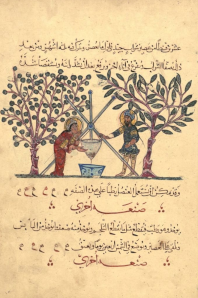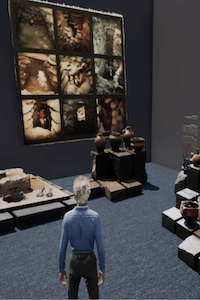
Not a Friend of ASOR yet? Sign up here to receive ANE Today in your inbox weekly!

May 2024
Vol. 12, No. 5
Digitizing Cultural Heritage: Challenges, Opportunities and Best Practices
By Peter Herdrich
All around the world, cultural heritage is under threat: from conflict to climate change to urban expansion, the challenges facing heritage sites across the globe are numerous, complex, and require increasingly urgent action.
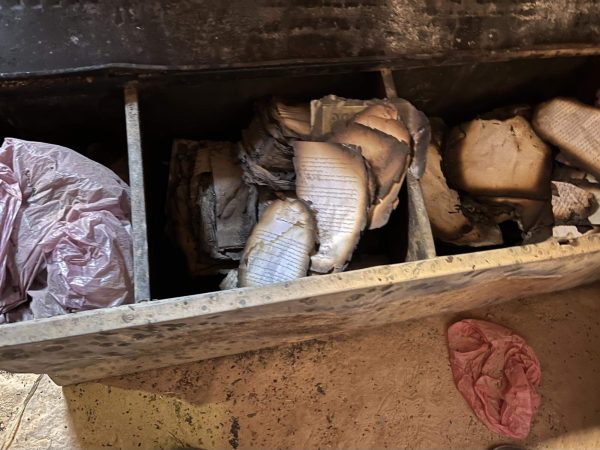
Correspondence from the time of Algerian independence that was burned in a fire at a private library in Algeria. Photo © Peter Herdrich.
While violent conflicts pose the most immediate and critical threat to heritage sites and assets, slow-burning threats like climate change continue to simmer in the background, posing serious existential, long-term risks. For example, a study conducted in 2022 found that, of 244 UNESCO cultural and heritage sites surveyed across the Mediterranean region, the majority are already vulnerable to the threats of man-made climate change and extreme events—and using the Intergovernmental Panel on Climate Change’s worst-case scenario for future CO2 emissions, 35 of these sites would fall under the ‘high hazard’ category, while another 12 would fall under the“extreme hazard”category. Today, preservationists worldwide are increasingly looking at digitization as one viable solution for protecting heritage under threat. Both tangible and intangible heritage artifacts—from physical relics to oral histories—are now being captured and preserved via diverse digital tools and techniques. In addition to supporting the resilience of cultural and historical heritage, digitization can help make heritage sites and artifacts more accessible to a wider audience, ultimately enhancing the interest, activism, and political will necessary to gain greater investments in heritage preservation. They also serve as provenance records in case of theft, significantly increasing the odds of repatriation if the object is recovered.
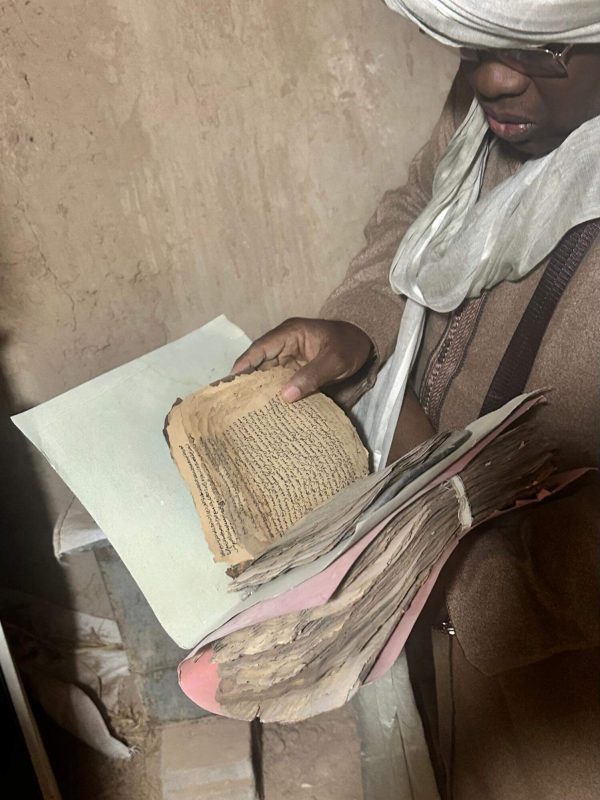
A librarian shows us a manuscript to be digitized from a private library in Algeria. Photo courtesy of Abir Chorfa.
But as practitioners, we understand that not all digitization efforts and methodologies are created equal, and appreciating the challenges, opportunities, and best practices associated with digitization can help heritage workers, community members, and other experts navigate the best approach for digital preservation in their specific contexts or circumstances.
The Challenges and Opportunities of Digitizing Heritage
The practice of digitization has opened the doors to endless opportunities and possibilities in the preservation and dissemination of cultural heritage. It burst into the public consciousness when experts virtually reconstructed destroyed sites like Palmyra, in Syria, and the Bamiyan Buddhas, in Afghanistan. Working recently at the Bardo Museum in Algiers, our Antiquities Coalition team, collaborating with partners at the Algerian Ministry of Culture and Arts, the Egyptian Heritage Rescue Foundation, and the U.S. Embassy in Algiers, taught 3D photogrammetry and trained Bardo staff to create 3D models from their collection. Digitization is also allowing displaced and diasporic communities to reconnect with their heritage and identity. A great example of this was provided at last year’s AlUla World Archaeology Summit, during a session entitled, Saving Archaeology One TikTok at a Time: panelist Sparsh Ahuja spoke about his experience working with survivors of the India-Pakistan partition, creating digital experiences that allowed these survivors to take virtual tours of their ancestral homes—while also allowing younger generations to connect with their heritage.
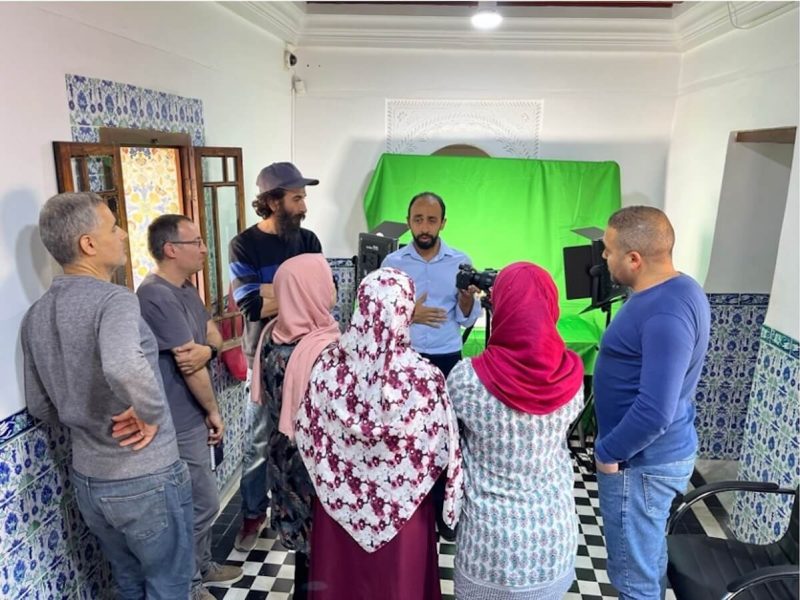
Ehab Naguib of partner organization the Egyptian Heritage Rescue Fund trains Algerian museum staff in digital photography at the Bardo Museum in Algiers. Photo © Peter Herdrich.
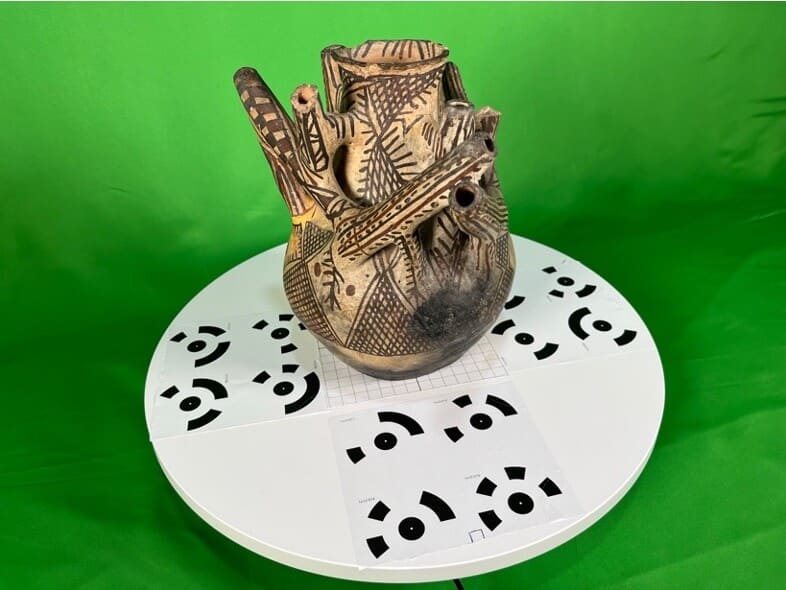
A cruche (jug) from the Bardo Museum in Algiers being prepared for 3D photogrammetry. This early 20th century pottery piece from the Cheliff region of western Algeria has eight spouts. Curators posit it could have been used for ceremonial or decorative purposes with its complex design suggesting symbolic significance. Photo © Peter Herdrich.
There are many successful examples of heritage digitization from around the world. But the process of digitization is not without its challenges: for example, just as with physical preservation efforts, not all heritage assets can be digitized, and practitioners and community members must still make decisions about what assets to prioritize. Furthermore, when considering the sustainability of digital records, it’s important to remember that digitization does leave a carbon footprint, and the potential environmental impact of these efforts should be fully and thoroughly considered.
The greatest challenge, however, comes with efforts to scale up these initiatives. The actual process of scalability, of course, is not the issue: the funding is. And gaining funding requires gaining awareness and buy-in from diverse stakeholders, which means convincing these stakeholders of the importance of digitizing heritage.
A cost-benefit analysis of digitization can clearly demonstrate the immense value and opportunity associated with heritage digitization and the benefit of digitizing at scale. For example, the visionary Hidden Collections Africa program seeks to digitize at-risk collections across the African continent. The program was initiated by Dr. Buhle Mbambo-Thata, Librarian of the National University of Lesotho, who has partnered with the Council on Library and Information Resources to scale up and address the problem. “Africa needs digital environments, infrastructures, and digital skills to engage with the creation of digital content from Africa,” she explains. “Hidden Collections Africa is an important opportunity to work toward digital equity, so that the voices in digital spaces represent all of humanity.” If this project can successfully reach all 58 of the countries and territories that make up the continent of Africa — which faces some of the gravest threats from climate change — it would easily justify a budget in the scores of millions of dollars.
For those seeking funding and support for heritage preservation endeavors, there are, thankfully, a growing number of opportunities available. Among the most notable is the British Library’s Endangered Archives Programme, which seeks to preserve cultural heritage and make it available to as wide an audience as possible. The program provides grants to applicants around the world who are working to digitize and document diverse archives, from manuscripts, books, and periodicals to photographs and audio recordings. The program has helped digitize more than 13 million images and 35,000 soundtracks since 2004. And, critically, they make these records accessible to the public on their website, providing a one-of-a-kind resource to global audiences interested in their content.
But even with proper funding, those of us engaged in heritage digitization are quickly discovering that the success of these efforts hinges heavily on the process and practices being employed.
Heritage Digitization: Best Practices and Approaches
Of all the lessons being gleaned from heritage digitization, perhaps the most important is this: these efforts are for naught without the engagement and buy-in of local communities. We have learned that we must approach digitization with humility, and with the express commitment that community members make the ultimate determination about what is worth digitizing and how it is presented.
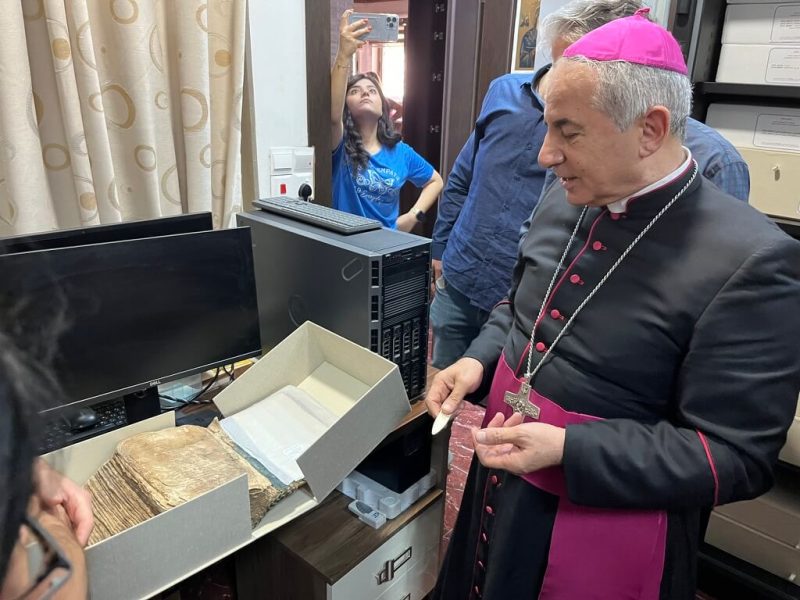
The director of Centre Numérique des Manuscrits d’Orientaux (CNMO), Archbishop Najeeb Michaeel, examines manuscripts to be digitized. Photo © Peter Herdrich.
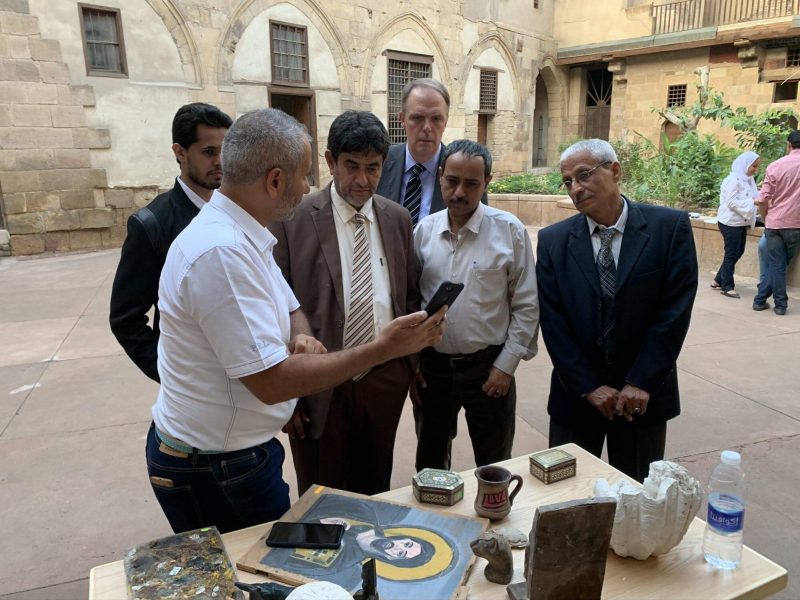
An Egyptian Heritage Rescue Foundation trainer leads a photography training session with Yemeni partners from the National Museum of Aden at the EHRF facility in Cairo. Photo © Peter Herdrich.
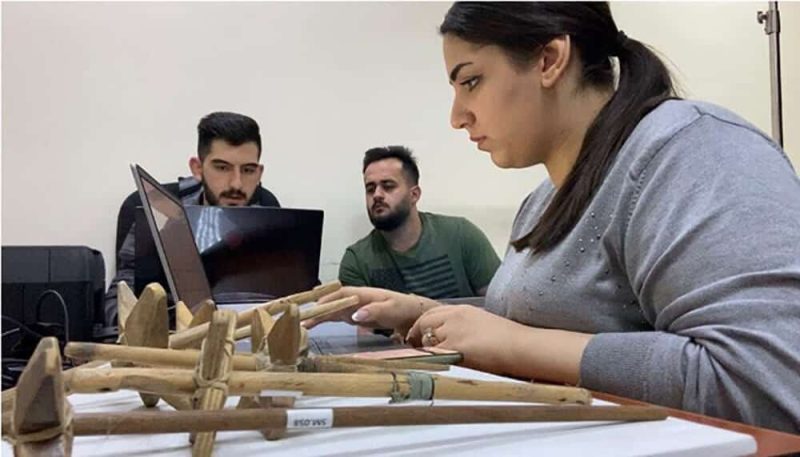
Antiquities Coalition project staff create data records for the collection database at the Syriac Heritage Museum, Erbil, for our USAID-funded work preserving religious minority community heritage. Photo © Peter Herdrich.
This means that much of the effort being undertaken by heritage teams is focused on training and empowering community members, so that they can take a lead role in the digitization process. ASOR’s Cultural Heritage Initiatives program models this approach in its Digitizing Manuscripts of the Trans-Saharan Trade project, working in Libya with the Ghadames Society for Heritage and Manuscripts. In neighboring Algeria, our team has worked with multiple local museums, training staff and community members on digitization practices—and ultimately letting them guide and further these efforts. In Northern Iraq, we are now in our third year of a USAID-funded project with the Assyrian and Yazidi religious minority communities of video documentation and digitization of both tangible and intangible heritage. Similarly, the Abraham Path Initiative also uses video to document intangible cultural heritage practice, including the embroidery tradition of the Bakhdeda and Yezidi religious practice, in Kurdistan.
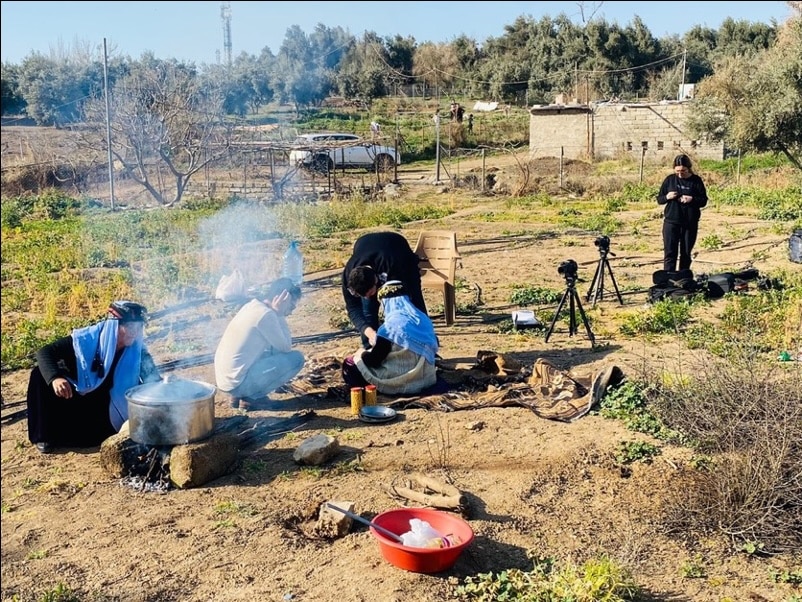
Documenting the preparation of smat, a traditional Yazidi lamb stew. Intangible cultural heritage video documentation. Photo courtesy of the Yazda Intangible Cultural Heritage Documentation team, Duhok, Kurdistan.
Engaging local community members can also add rich insights to our understanding of heritage assets. The Courtauld Institute of Art in London, for example, recently digitized the collection of photographer Anthony Kersting, whose works have captured countless sites in Norway and elsewhere across the globe. Previously only accessible to the college’s students, these archives were opened up to the public, and volunteers from local communities were engaged to help digitally tag sites and features in the photographs—providing new layers of knowledge and insight about the images.
Around the world, examples like these are providing successful frameworks for responsible, sustainable digital heritage preservation and demonstrating the key tenet of these efforts: that they should ultimately work in service of local partners and communities.
But a ground-up approach also implies that work must continue beyond the communities themselves—because to guarantee the survival and persistence of these efforts, it is vital that the value of cultural heritage digitization be enshrined in legal mandates, policies, and frameworks.
How International Policies and Frameworks are Providing a Clearer Path Forward
The United Nations has played an important role in creating a framework for digitization. UN Security Council Resolution 2347 from 2017 expressly calls for Member States to improve “cultural heritage’s and properties’ local and national inventory lists, including through digitalized information when possible, and making them easily accessible to relevant authorities and agencies,” as a way to prevent and counter the trafficking of cultural property.
In 2020, UNESCO brought together an international array of experts and practitioners to analyze the policy gaps and potential solutions in digital heritage preservation. In a report summarizing the outcomes of the event, UNESCO’s Deputy Director-General Xing Qu underscored the importance of policy in heritage digitization: “It is critical that we implement appropriate policy interventions, nationally and institutionally. Only in this way will we ensure that natural and man-made risks threatening our documentary heritage are effectively managed.” Building up relevant legal frameworks — whether at the local, national, or international level — can enhance the political will to fund and implement heritage digitization initiatives, and can safeguard their resilience, continuity, and sustainability.
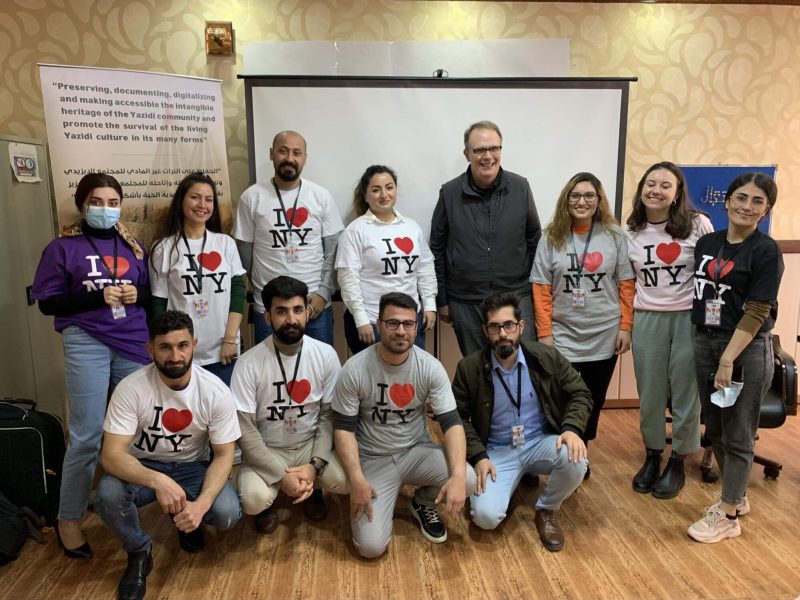
Antiquities Coalition intangible cultural heritage video digitization team partners from the social service organization Yazda, Duhok. Photo © Peter Herdrich.
Thankfully, there tends to be near-universal agreement about the importance of digitization, and policymakers worldwide can generally build consensus on the value of digital heritage preservation. In fact, the process of establishing policy frameworks around digitization can play a clever and unexpected role in improving international relations. Today, heritage experts have begun to promote the idea of “Digitization Diplomacy,” which uses heritage digitization as a launchpad for deepening ties between communities and nations, because of the benefits that all parties derive from these projects. And at a time when international conflicts are putting immense and immediate pressure on cultural heritage assets around the world, this kind of diplomatic stepping-stone has never been more vital.
Peter Herdrich has directed tangible and intangible cultural heritage preservation and digital infrastructure projects in Algeria, Egypt, Iraq, and Yemen and is Co-Founder of the Antiquities Coalition. pherdrich@culturalcapital.net
Want To Learn More?
Digitizing Manuscripts from Southwest Asia: Access, Ethics, and Sustainability
By Raha Rafii
Digitization of manuscripts is widely seen as a valuable process that preserves documents and democratizes access. But do digitized manuscripts actually increase access for all potential users? And is digitization as permanent and sustainable as people assume? Read More
A Virtual Visit to Tel Dan
By Matti Friedman
Anyone who’d like to visit Tel Dan without actually traveling to northern Israel—and who wants to be shown around by Avraham Biram, the late excavator of the site—can now do so thanks to the wonders of virtual reality. Read More
